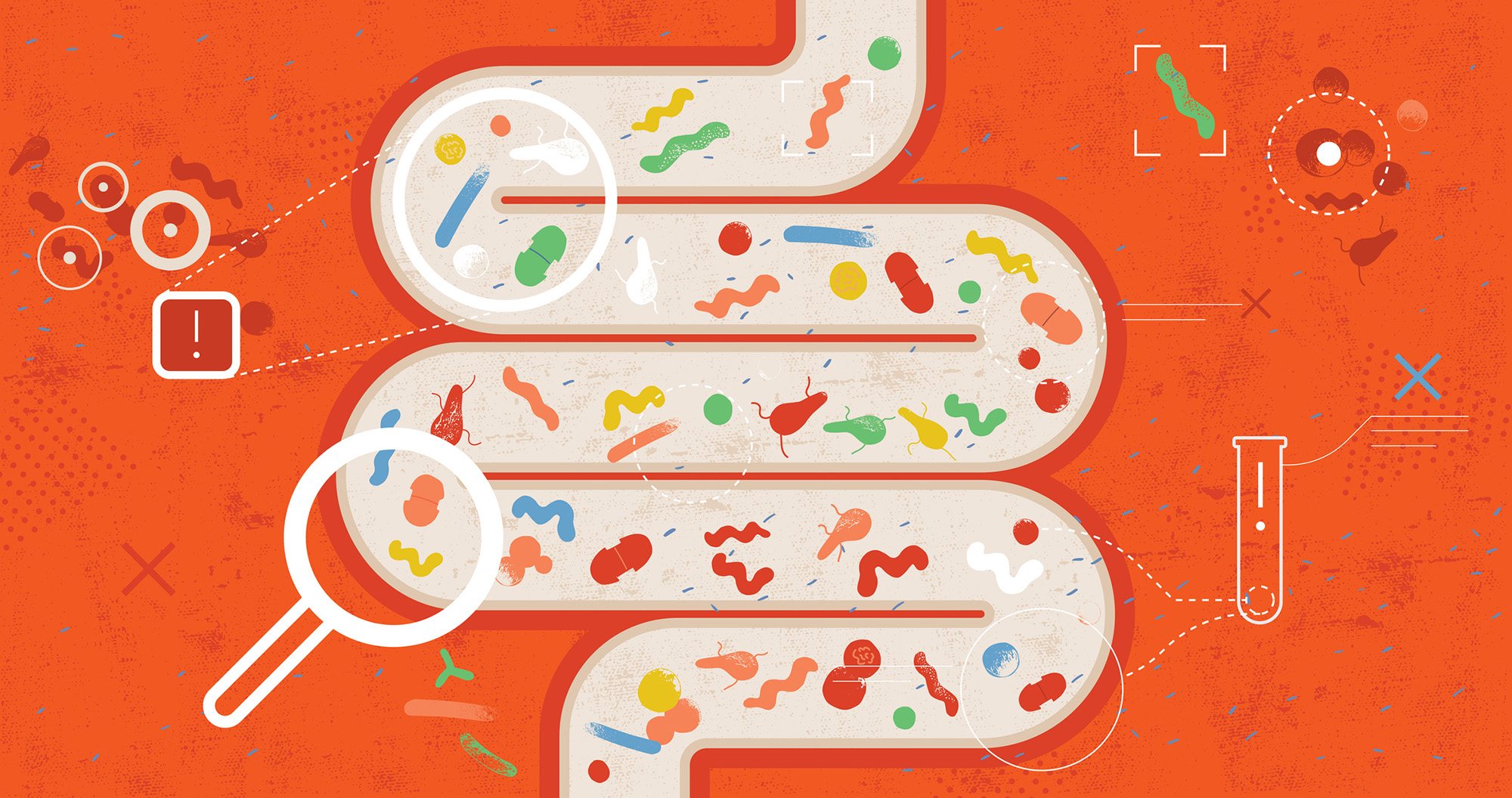
(iStock.com/DrAfter123)
Gut microbiome health, quantum biosensing breakthrough, and more.
Gut reaction
Researchers from UChicago led by Megan Kennedy, PhD’23, a student in the Medical Scientist Training Program, recently revealed how gut health recovery following antibiotics is shaped by diet. In the study, published in April in Nature, mice were fed diets mimicking either a Western (processed food, red meat, dairy, sugar) or Mediterranean (whole grains, produce) diet. Both groups were then given antibiotics. After antibiotic treatment, mice on the Western-style diet struggled to maintain a diverse gut biome and were thus more susceptible to infections such as Salmonella. The gut biomes of mice eating the Mediterranean-style diet recovered a greater variety of microbes than those eating the Western-style diet, even when the latter were given fecal transplants. The research highlights diet’s influence on gut health and resilience: More so than fecal transplants, a healthy diet facilitates the support and recovery of the gut microbiome.—B. S.
Made-for-TV sensors
Diamond nanocrystals are some of the most promising materials for building hypersensitive quantum sensors—tools that could one day detect diseases like cancer inside living cells. But shrinking these sensors to a cellular scale drastically weakens their performance. To tackle this problem, Uri Zvi, PhD’25, and collaborators from UChicago’s Pritzker School of Molecular Engineering and the University of Iowa turned to an unlikely source of inspiration: quantum dot LED televisions. These TVs use fluorescent quantum dots stabilized by special shells. Borrowing the idea, the researchers encased diamond nanoparticles in siloxane (silicon-oxygen) shells designed both to be biocompatible and to enhance the particles’ quantum properties. The team expected minor gains, but the coating drastically improved the stability and sensitivity of the particles. Published in May in Proceedings of the National Academy of Sciences, the study provides a new framework for engineering quantum devices and opens the door to ultra-sensitive biosensing.—V. L.
Pandemic productivity
Real labor productivity in US restaurants had been constant for nearly 30 years when the COVID-19 pandemic hit. In a National Bureau of Economic Research working paper from March 2025, a team led by Chicago Booth’s Austan Goolsbee, the Robert P. Gwinn Professor of Economics, and Chad Syverson, the George C. Tiao Distinguished Service Professor of Economics, shows that productivity at US restaurants jumped more than 15 percent in 2020 and has remained elevated. To understand why, the researchers analyzed mobile phone and transaction data from more than 100,000 fast-food restaurants. They found a plunge in the amount of time people stayed in restaurants, with the percentage of customers staying 10 minutes or less rising. There was also a surge in take-out and delivery orders that persisted when in-person business returned. Shorter visits translated directly into higher productivity, enabling restaurants to serve more customers per employee without adding staff. The findings suggest that other service industries may have seen similar gains—an idea the researchers say is worth exploring in future research.—V. L.
